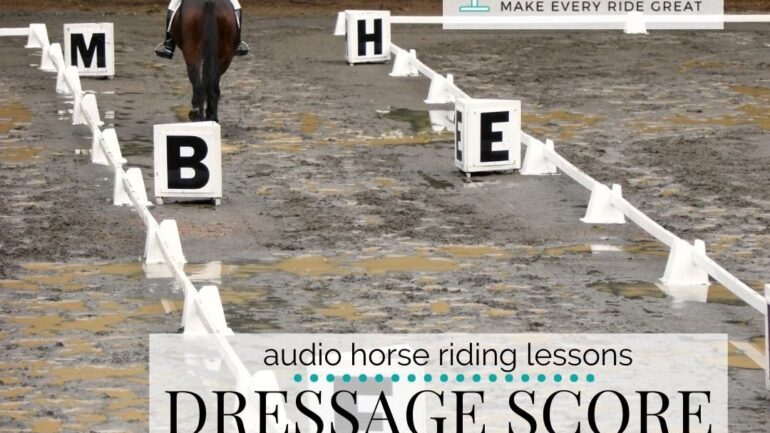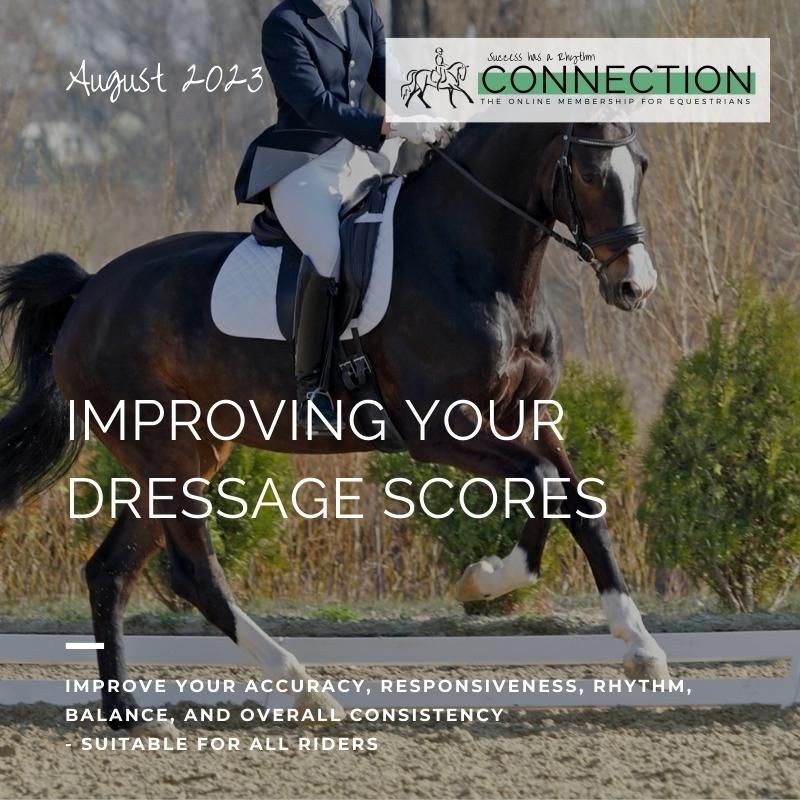Dressage is a funny thing when we really think about it. Riders pay someone for their opinion on how well they are riding for those few minutes. And how well their horse is responding and performing for those few minutes. And yet, often when riders receive their marks, it can feel like harsh criticism! Remember, dressage is all about the judge’s opinion. It is subjective. Unlike, say, jumping for example. In jumping, the pole is either up or it’s down. No in-between and definitely not open to interpretation!
But, the fact that the comments are subjective allows you to begin analyzing your dressage score sheets and use them as a training tool for you and your horse. And this may require a mindset shift first…
In this episode of the Daily Strides Podcast, I want to help you begin using your score sheets as a tool to improve your riding. After all, if shift our thoughts about each dressage test to being less about harsh judgment and more of a mini private lesson, well, it helps us to be more open to the feedback we receive.
Understanding Dressage Score Sheets
So let’s begin by saying that each movement is scored between 0 and 10. 0 means it never happened, and 10 is perfect! And, it is also worth noting that judges are only required to comment on any movement that was deemed to be a 5 or under. So, if you see a fairly empty comments section, well that’s a good thing :)
The dressage score sheets are a tool used by the judges to evaluate your performance during a dressage test. They include comments, scores, and, sometimes, diagrams or notes regarding specific movements and overall performance. The goal is to help you understand how the overall test went, and pointers to work on for the next time.
Remember, the judge is not there to train or coach you. They are merely observing what they see.
And when this is also coupled with the fact that there’s a lot happening quickly, one movement, then the next, and the next, etc. it makes sense that the judge won’t be able to write a composition for you. They are, again, simply commenting on what they are observing as you ride your test.
1. Analyze the Comments Thoroughly
When you receive your dressage comment sheet, the first step is to read through it carefully. Many riders make the big mistake of only wanting the ‘score’ or the ‘mark’. And, yes, in the moment that is usually what’s most important. However, going forward…
Pay close attention to the judge’s comments on each movement and the overall impression. Judges often use abbreviations and shorthand, so make sure you understand their terminology. If you have any questions or uncertainties, don’t hesitate to seek clarification from experienced trainers or judges.
2. Notice Patterns
Dressage tests consist of a series of movements which are judged separately. One by one as you ride through your test. By searching for patterns, both in an individual test and by looking over previous tests as well, you can begin to identify things about yourself and your horse. What movements you are stronger or more able to ride? And, similarly, the movements that need more attention and development.
Look for patterns in the feedback; if several movements received similar comments, it’s a clear indication of an area that requires improvement.
Remember, dressage judges are not just random riders put there to dish out harsh criticism! Becoming a judge is not something a rider can do on a whim. Different governing bodies have different requirements, but it is safe to say that most judges will have been successful in their own right as dressage riders. And then also have passed some sort of training, exam, or program. This means that while their opinions can be subjective, they are also guided by well-defined principles.
3. Begin Creating a Training Program
Once you’ve identified specific areas that need improvement, now the work begins on improving those individual things. And this is what can trip riders up. Things such as relaxation or rhythm are absolute basics, and a lot of riders are not keen to go back to the start again! They rather want to work on the ‘fancier’ movements. Unfortunately, this is why they will remain ‘stuck’ at a certain level without ever really progressing.
Many of the planned riding sessions in your program can be based on the feedback from your dressage score sheets.
For example, if the judge (or judges!) pointed out issues with your horse’s impulsion, your goal might be to improve impulsion in your next training sessions. I also think that it’s important not to get too hung up on only improving the weaker parts of your test. That will usually result in riding becoming a bit of a chore for you and your horse! Sprinkle the topics that need work throughout your rides. And remember to keep it fun for both of you.
4. Record Yourself Riding the Test
My final tip for you to make the most of your dressage score sheets is to actually record yourself riding the test. Now, obviously, this can only be done going forward with future tests. But if you have the recording on the actual test that was judged and then use that to compare, movement for movement, with your dressage score sheet, you can begin to ‘see’ what is more or less desirable in your work.
This allows you to visually assess your performance and compare it with the judge’s feedback. A side by side review or comparision.
Instead of seeing your marks, scores, and comments as negative, be realistic about what they really are. Personalized feedback from an expert on the topic tells you where to focus your attention and energy going forward so that you and your horse can improve.
And that can be an amazing thing!
Happy Riding
Lorna
- Finding More Time to Ride Workbook
- Improving Your Dressage Scores
- Connection Training – Improving Your Dressage Scores (August 2023)


